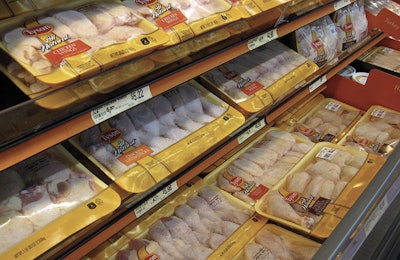
There’s a new tool to help measure consumer opinion on food messaging – biometrics.
In the past, market research relied on self-reported data, namely surveys to learn about consumer viewpoints on antibiotic use, sustainability, welfare and other hot topics for the meat industry.
“How someone responds to a survey doesn’t always necessarily translate to how someone actually buys,” Jessica Meisinger, PhD, North American Sustainability Lead, Merck Animal Health, said during “Using New Tools: Measuring Consumer Opinions with Biometrics Confirmation,” an Animal Ag Alliance Virtual Pre-Summit Webinar that took place on May 4.
“Biometrics show us how someone actually feels as opposed to how they think they feel.”
Functional neuroimaging
People can feel a variety of emotions when processing new information about different types of food. One way to measure this is through functional neuroimaging – which precisely records the changes in someone’s brain.
In these kinds of studies, participants are asked for their opinions on a variety of hot topics, such as bird welfare or GMOs, while an MRI machine monitors their brain activity.
“Functional magnetic resonance imaging (fMRI) measures changes in blood-oxygen levels as the brain processes new information,” Tyler Davis, PhD, Assistant Professor, Psychological Sciences, Texas Tech University, explained during the webinar. “This can give us an idea about the parts of the brain that are active and tell us how people feel and process what they’re looking at in close to real time.”
It can even be used to predict how or if people will change their attitude about a certain topic after education.
A challenge
Meisenger ended the session with a challenge to the animal protein industry:
“How can we as an ag industry be more proactive about getting information in front of consumers?” she said. “Consumers want to feel like part of a tribe. They don’t want to change. They just want to feel better about what they’re doing. What can we, as an industry do to make them feel better about meat?”
Like what you just read? Sign up now for free to receive the Poultry Future Newsletter.


















